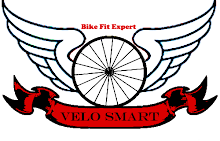Neck dysfunction due to pelvic malalignment
Recently I treated a road cyclist who has had a couple of years of persistent neck pain. This prevented him from reading the paper and made computer work and time-trialing on the bike uncomfortable. He had had a severe car accident 20 years ago where he had been knocked unconscious as well as suffering from a fractured jaw. 4 years ago he had a motor bike accident. 2 weeks prior to seeing me had had been on holidays at the beach where he had been doing a lot of boogie boarding, touch football and generally playing with his children when severe left sided neck pain occured.
Movement restrictions in his neck were left rotation 1/2, right rotation 2/3, left lateral flexion 2/3, right lateral flexion 1/2, all of which were restricted by pain and muscle spasms. Flexion was restricted to 3/4 and extension was unremarkable. Palpation revealed a right shifted C2 with countershift/rotation/lateral flexion of C1, as well as some stiffness in the thoracocervical junction and mid thoracic regions. Additionally, the scalene muscles and levator scapulae were in spasm and the sternocleidomastoid muscle was dominant. Generalized atrophy of the trunk muscles (trapezius, serratus anterior and pectorals) were present. However, the biceps, triceps and deltoids were well defined.
Treatment consisted of joint mobilizations to the upper C/S, thoracocervical junction and mid thoracic regions. Additionally, soft tissue work (massage and dry needling) was performed to the trapezius, levator scapulae and scalenes. Exercises for scapula stability were given in addition to supine bridging soccer ball rolling for his T/S kyphosis, (deep neck flexor endurance and trunk stability), as well as Mulligans techniques for self mobilisation of the thoracocervical junction. This resulted in overall improvement of the acute condition, however the underlying chronic condition was still present after 6 treatments.
The client had only taken up road cycling in the past few years, and hence I decided to look at his posture on his bike. What became immediately obvious was reduced left hip flexion with concommitant left anterior ilial rotation, which resulted in significant flexion and left rotation of the lumbar spine. This continued up into the thoracic spine with over-reaching of his left arm as a result of the pelvic poisitioning. Such over-reaching created significant instability in the scapula, which in turn caused reduced serratus anterior - external obliques, latissimus dorsi - transverse abdominus function.
Interestingly, the anterior rotation of the ilium was potentially a contributing factor to reversed gluteal-hamstring timing as well as premature fatigue and cramping of the hamstring muscle. However, palpation of the lumbar spine revealed tenderness and stiffness at the L3/4 levels on the left. On further questioning the client then revealed an episode of severe low back pain several years ago. Straight leg raising (SLR) with dorsi-flexion (DF) was reduced to 60 degrees (versus 80 degrees on right). Prone knee bend was reduced to 120 degrees. Both iliopsoas muscles were highly activated in sitting, but responded somewhat to lateral diaphragmatic breathing. The left piriformis was tight and the right SIJ was tender.
Treatment consisted of muscle energy techniques (MET's) to the pelvis and lumbar spine, as well as yoga poses of 'down dog', 'the triangle' and a modified 'warrior pose' incorporating lateral flexion and lateral breathing. Dry needling techniques were applied to the piriformis and quadratus lumborum. Rotation MET's were specifically directed to the L3/4, L4/5 region, as well as MET's to the left hamstring for the anterior ilial rotation. A combined MET of L3/4 rotation and hip external rotation (Piriformis-Iliopsoas) was performed which corrected the ROM of the SLR as well as improved cycling posture. Additionally, an immediate improvement of C/S rotation and lateral flexion was noted to what I would describe as hypermobility (chin over shoulder and ear to shoulder ROM). This was remarkable even for me. Due to the large improvements in ROM seen, I added global as well as specific stabilisation exercises which included a modified 'plank' and modified sideways body lift with 'the clam'. The modified plank included 'scapula push-ups', small amplitude stepping and hip abduction. Deep abdominal and hip stabilisation exercises were introduced where the differentiation of iliacus from psoas major, and superficial from deep stomach muscles was emphsised in a functional manner. Additionally, diaphragmatic breathing - pelvic floor synergy was practiced in sitting, standing, and during cycling. Additionally, the Alexander technique of 0/C1 elongation was used to enhance diaphragm - scapula function as well as to improve overall posture. Stretching of the low thoracic spine into extension was introduced into a cycling exercise. The 4 point kneeling position was used to practice pelvic rotation whose aim was to improve deep hip rotator activation as well as achieve thoracic spine rotation with scapula stabilisation.
Finally, it was also ascertained that he was right eye dominant. Hence, one leg balance exercises whilst juggling a rolled up newspaper keeping his right eye shut was introduced for occulomotor - cervical co-ordination function. Additionally, some occulomotor tracking as well as stabilisation exercises were given as a self assessment and treatment technique.
Functionally, his time trialing has improved from 46 minutes 3 seconds to 42 minutes 36 seconds. After 2 years of not being able to read the paper his ability to read the paper has improved from 5 minutes to painfree status. Computer work had been restricted to 30 minutes but was also now painfree. Hence, evidence based practice was attained as the values and beliefs of the client were satisfied.
Copyright Martin Krause 1999 - material is presented as a free educational resource however all intellectual property rights should be acknowledged and respected
Monday, December 15, 2008
Subscribe to:
Post Comments (Atom)

No comments:
Post a Comment